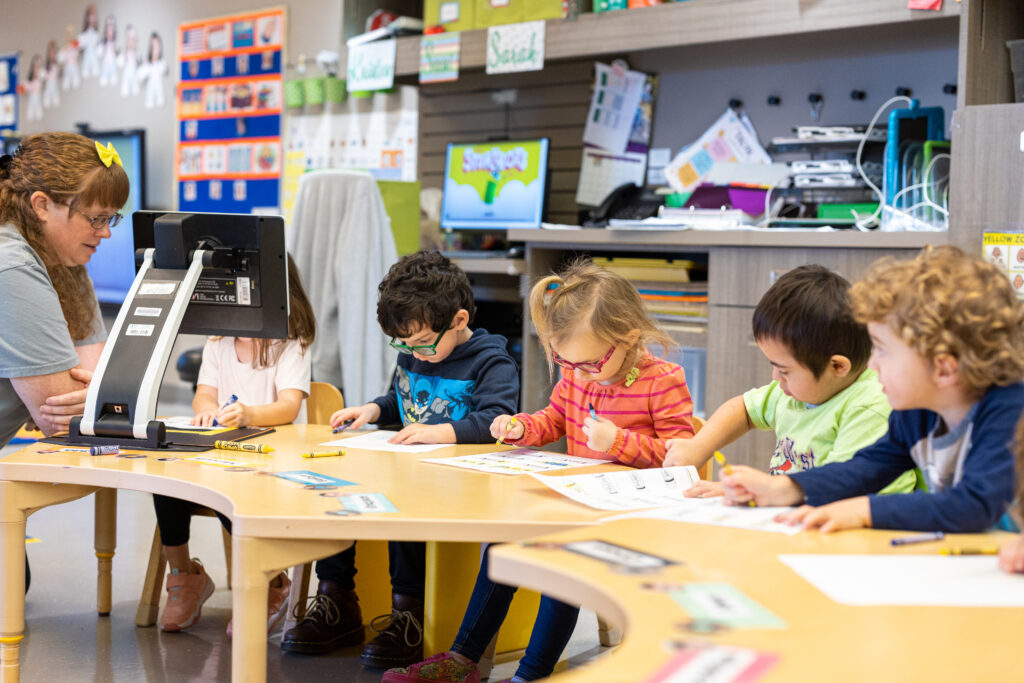- Hannah Jimenez

Creating meaningful and defined spaces in your classroom is beneficial in many ways. A large, open space can be overwhelming for children with disabilities or sensory processing needs. Clearly defining each area will help them know what to expect in each space and what is allowed in each area of the classroom. It helps students feel more comfortable in their routines and helps with transitioning between activities throughout the day.
For example, having a designated area for dramatic play gives students a physical boundary of where toys and other play items belong in the classroom. If the play area has a blue rug, when it is time to transition to circle time, you can say, “It’s circle time! Toys stay on the blue rug. We sit in our seats!”
Physical boundaries can be created in the classroom using furniture, rugs, room dividers, curtains, colored tape on the floor, or even blankets or table cloths on the floor. Outdoor learning spaces can even be divided with clear boundaries by drawing lines in dirt with a stick or on concrete with chalk. In smaller classroom spaces, one area can even serve two purposes. At Little Light House, our tables serve as the students’ tables at mealtime, therapy groups, and classroom activities. Work with what you have available, and have fun being creative with your space!

